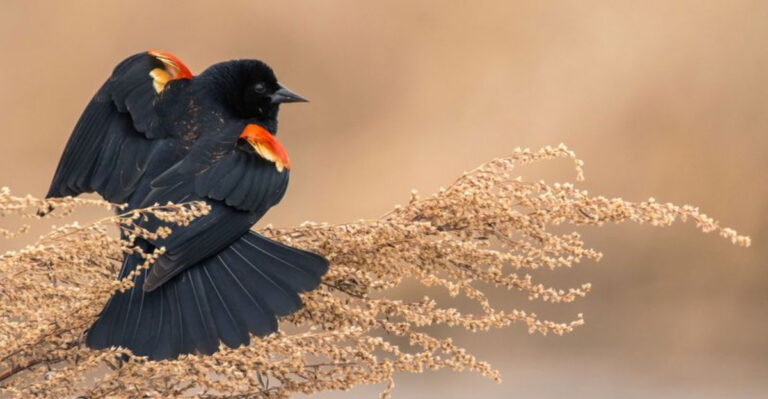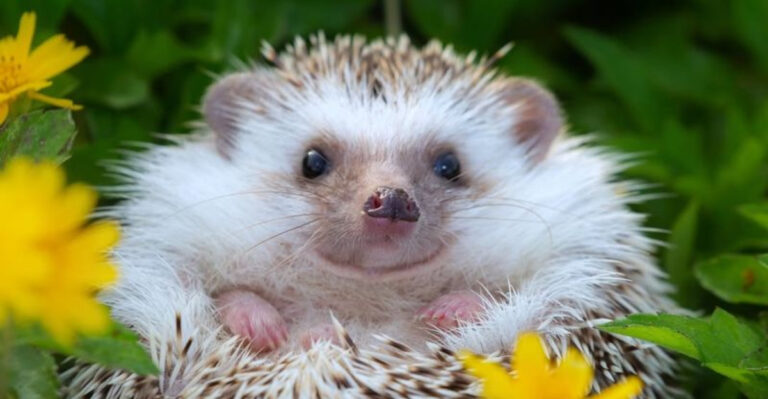Blue Jays May Not Be The Bird You Want In Your Yard And Here’s Why
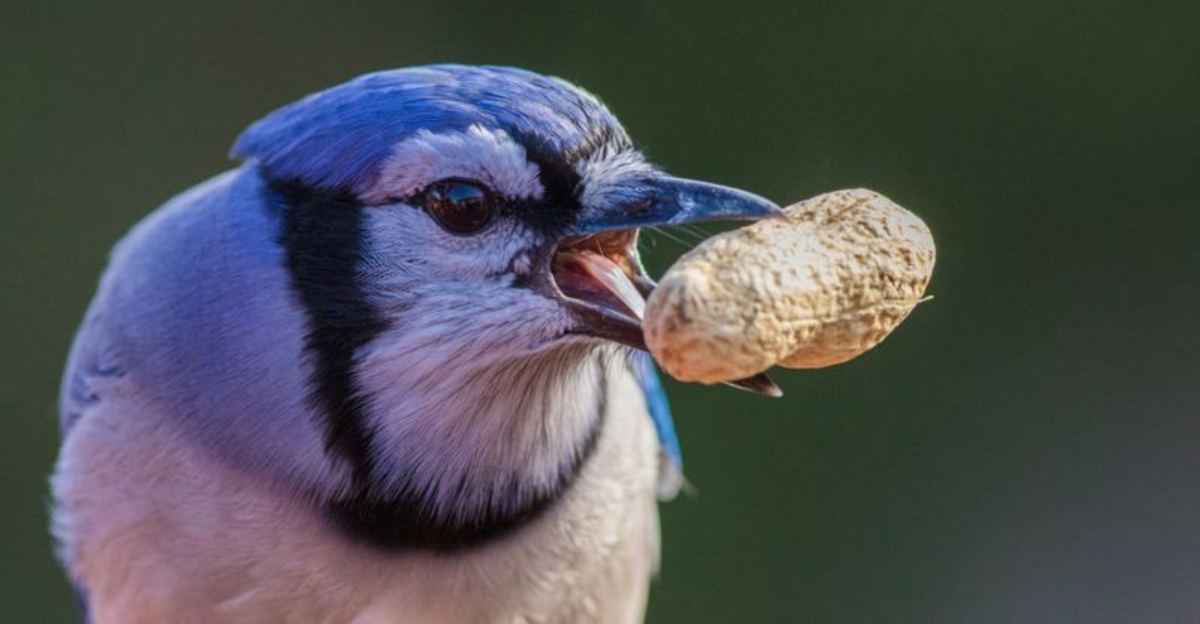
Blue jays, with their striking azure feathers and distinctive crest, might seem like welcome visitors to any backyard. These members of the corvid family are smart, beautiful, and certainly eye-catching when they swoop down to your feeders.
But before you start encouraging these colorful birds to make your yard their home, you might want to consider some of their less charming qualities that could make them unwelcome guests.
1. Bullies At The Feeder
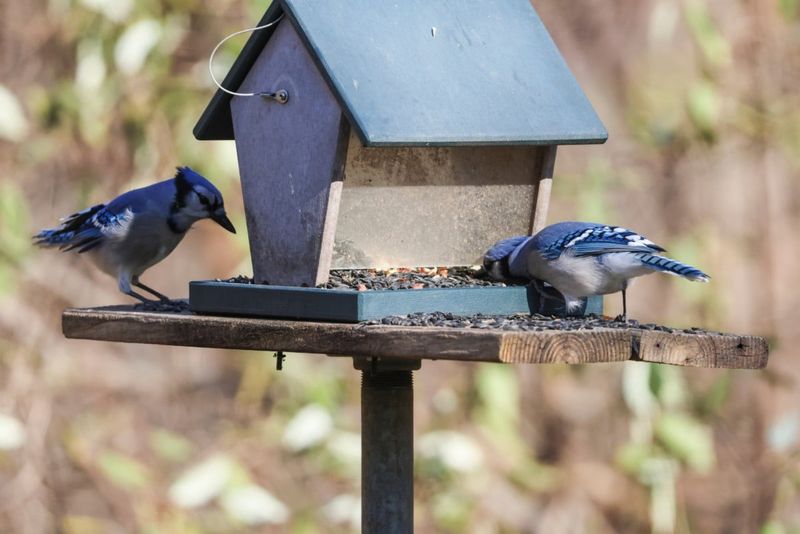
Blue jays don’t believe in sharing. These bossy birds will aggressively chase away smaller songbirds from your feeders, often through intimidation or outright attacks. They’ll swoop in with their loud calls, scatter everyone else, and then take over completely.
Many backyard bird enthusiasts report seeing chickadees, finches, and cardinals flee the scene when a blue jay arrives. Their territorial behavior can significantly reduce the diversity of birds visiting your yard.
If you’re hoping to attract a variety of feathered friends, the domineering presence of blue jays might sabotage those plans by creating an unwelcoming environment for gentler species.
2. Ear-Splitting Noise Makers
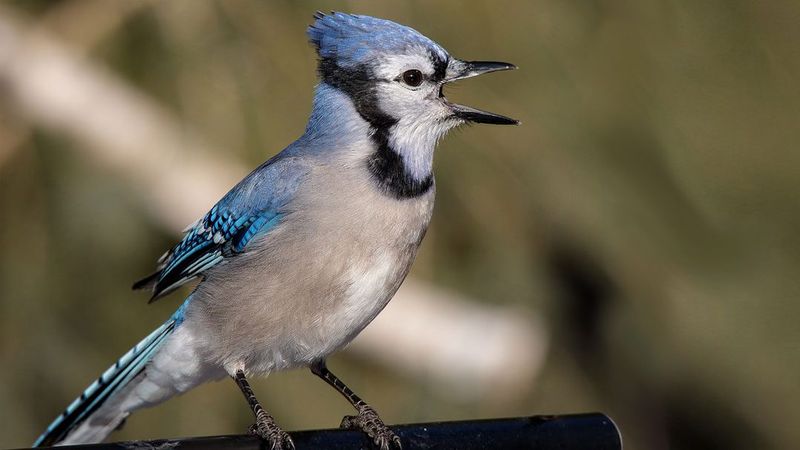
Morning sleep-ins become impossible with blue jays around. Their harsh, screeching calls can start before dawn and continue throughout the day. Unlike the melodious songs of many backyard birds, blue jays produce loud, piercing jays, screams, and rattles that carry for long distances.
These vocal birds use their calls for everything – warning others about predators, defending territory, or simply communicating with family members. A family of blue jays can create quite the racket!
For people working from home or those who value peace and quiet, having blue jays nearby might mean investing in some good noise-canceling headphones.
3. Garden Destroyers
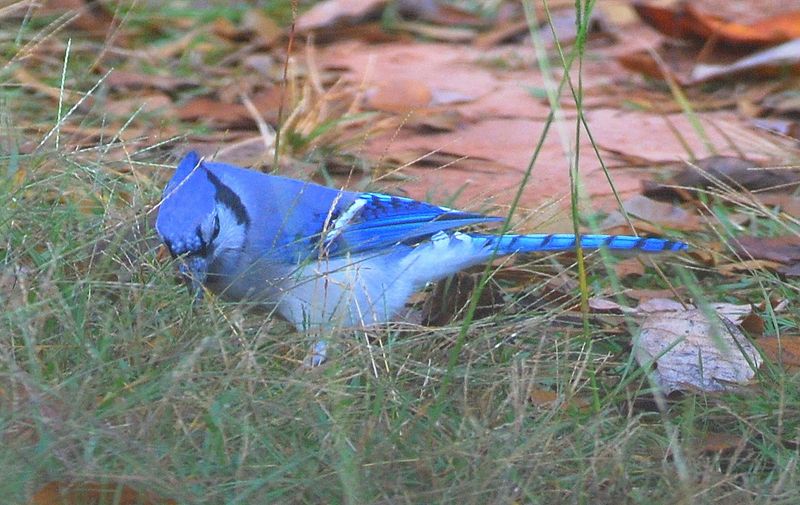
Gardeners beware – blue jays have a knack for digging up newly planted seeds and bulbs. They’ll methodically work through your carefully prepared garden beds, uprooting your future flowers and vegetables while searching for food. Their strong bills make quick work of your planting efforts.
These birds have excellent memories too. Once they discover your garden is a good food source, they’ll return repeatedly. Blue jays are particularly fond of corn, peas, and berries, often harvesting your produce before you get the chance.
Many frustrated gardeners have watched their spring planting disappear into blue jay beaks, forcing them to use protective netting or other deterrents.
4. Nest Raiders
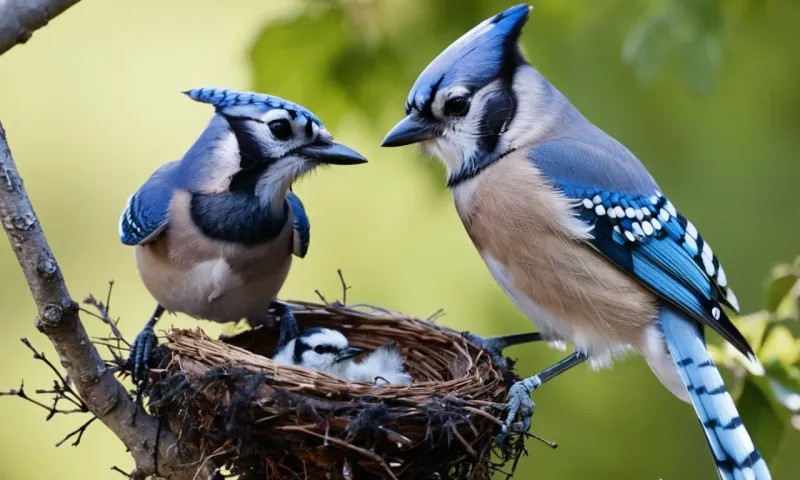
Blue jays harbor a dark secret – they’re notorious nest predators. These seemingly innocent birds will raid the nests of smaller species, eating eggs and even nestlings. This predatory behavior can devastate local populations of songbirds trying to raise their young.
Research has shown that while this isn’t their primary food source, it’s common enough to impact breeding success for birds like robins, chickadees, and warblers. During nesting season, many smaller birds will actually mob blue jays, trying desperately to drive them away from nest sites.
By encouraging blue jays, you might inadvertently be reducing the breeding success of other backyard birds you enjoy.
5. Hoarders Of Food
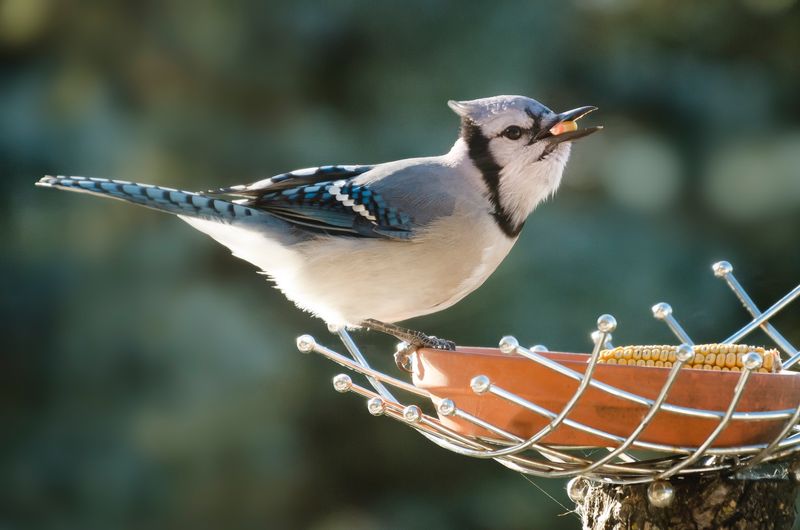
Ever filled your bird feeder in the morning only to find it empty by noon? Blue jays are likely the culprits. These birds don’t just eat at your feeder – they systematically empty it, carrying away seeds in their specialized throat pouch called a gular sac.
A single blue jay can transport up to five acorns at once, stashing them in hiding spots for later consumption. They’ll make repeated trips to your feeder, not to eat immediately but to cache food elsewhere.
This hoarding behavior means you’ll refill feeders much more frequently, increasing your bird feeding costs significantly. Their efficiency at emptying feeders can leave nothing for other birds you might prefer to attract.
6. Masters Of Mimicry
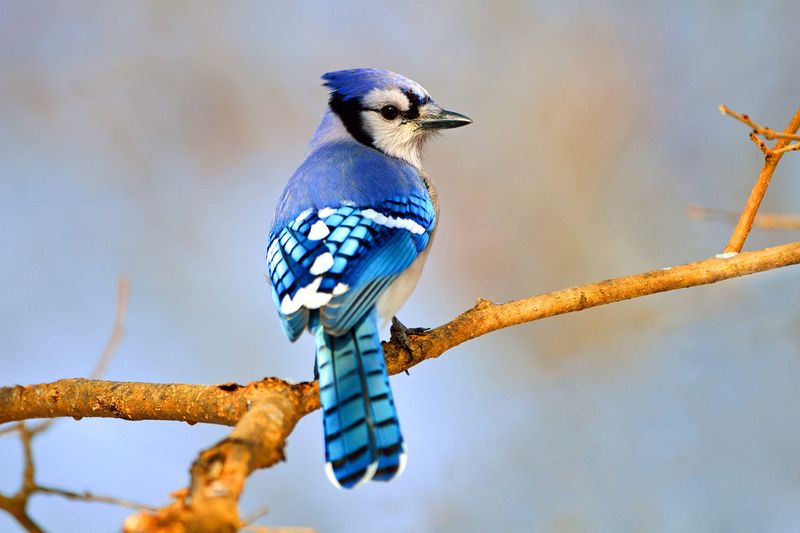
That hawk you think is circling your yard? It might actually be a blue jay’s voice trick. These clever birds are accomplished mimics who can perfectly replicate the calls of hawks, especially red-shouldered hawks, creating unnecessary alarm for other birds and even small pets.
Blue jays use these mimicked predator calls for their benefit – scaring other birds away from food sources or creating diversions. They can also imitate other sounds including car alarms, mechanical noises, and even human speech in some cases.
While fascinating, this ability means you can never quite trust what you’re hearing in your yard, as blue jays create a false sense of danger or confusion.
7. Messy Eaters
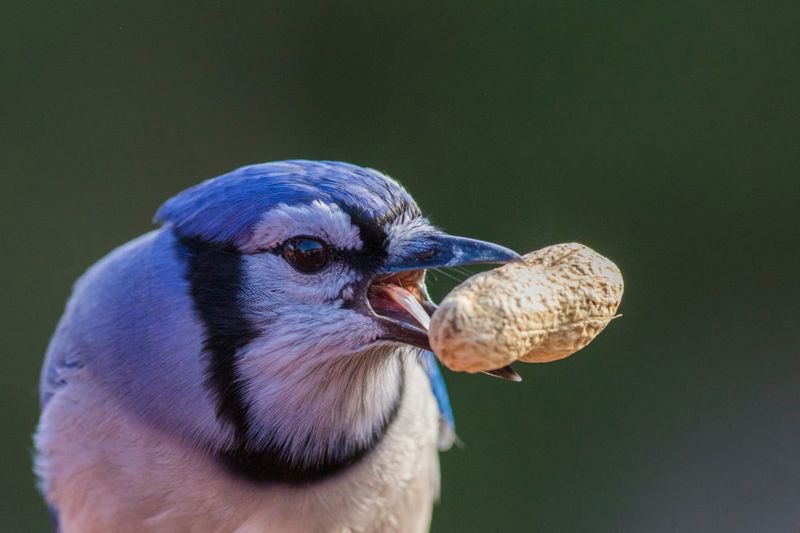
Blue jays turn feeding stations into disaster zones. Unlike neat eaters like chickadees, blue jays toss seeds everywhere while searching for their favorites. They’ll dump out entire trays of seed to find preferred items like peanuts or sunflower seeds.
This messy feeding habit creates significant cleanup work for homeowners. The scattered seed often sprouts, creating unwanted plants beneath feeders. Worse, the seed debris attracts mice, rats, and other unwanted critters to your yard.
Many bird enthusiasts find themselves sweeping patios daily or dealing with rodent problems after blue jays become regular visitors. Their wasteful approach to feeding creates a maintenance headache most backyard birders didn’t anticipate.
8. Extremely Territorial
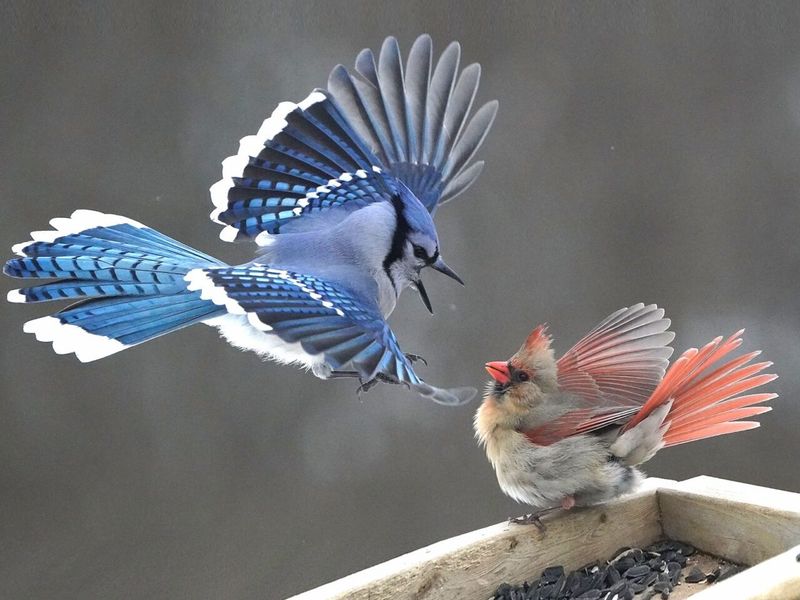
Blue jays defend their space with remarkable aggression. During breeding season, they become particularly territorial, dive-bombing anything they perceive as threats – including humans, pets, and other birds. Their protective instincts can make parts of your yard virtually off-limits.
Many homeowners report being unable to enjoy their gardens when blue jays nest nearby. The birds will swoop down, sometimes making contact with your head, while screeching loudly to drive you away. This behavior typically lasts for weeks while they raise their young.
For families with children or pets who want to enjoy outdoor spaces without harassment, territorial blue jays can create genuine safety concerns and diminish enjoyment of your yard.
9. Stubborn Residents
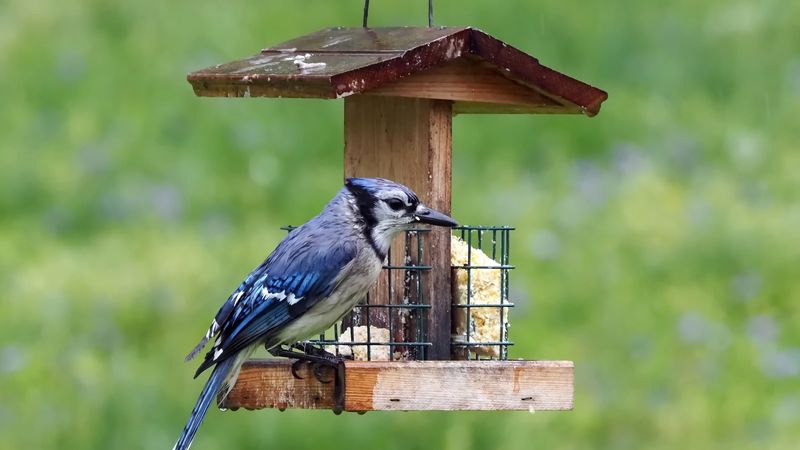
Once blue jays choose your yard, they’re extremely difficult to discourage. These intelligent birds quickly learn to overcome most deterrents homeowners might try. They’ll figure out how to access “squirrel-proof” feeders, ignore noisemakers, and return despite repeated attempts to redirect them elsewhere.
Their remarkable memory means they’ll remember your yard as a food source for years. Blue jays can live up to 7 years in the wild, creating a long-term commitment once they’ve adopted your space.
Many frustrated homeowners find that after inviting blue jays in, they’re stuck with these demanding, dominant birds regardless of how problematic they become. Prevention is much easier than trying to reclaim your yard later.
10. Attract Unwanted Attention
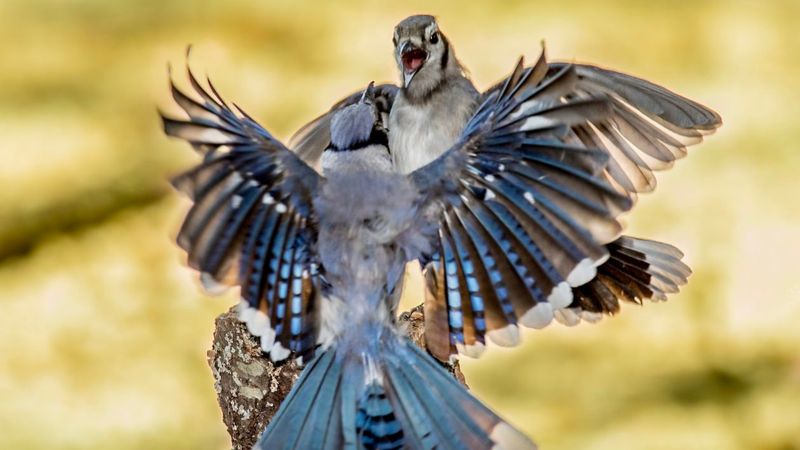
Blue jays don’t just bring themselves – they bring the neighborhood cats too. Their bright colors, noisy behavior, and ground-feeding habits make them particularly visible to predators. Cats are drawn to yards with blue jays, putting all your backyard birds at risk.
These conspicuous birds also attract larger predators like hawks and owls. While blue jays are skilled at evading capture, smaller songbirds that share your yard might not be so lucky when these predators come calling.
Many bird-friendly yards become hunting grounds once blue jays establish themselves. Their presence essentially puts a spotlight on your bird-feeding station, creating a potentially dangerous situation for the very wildlife you’re trying to support.

